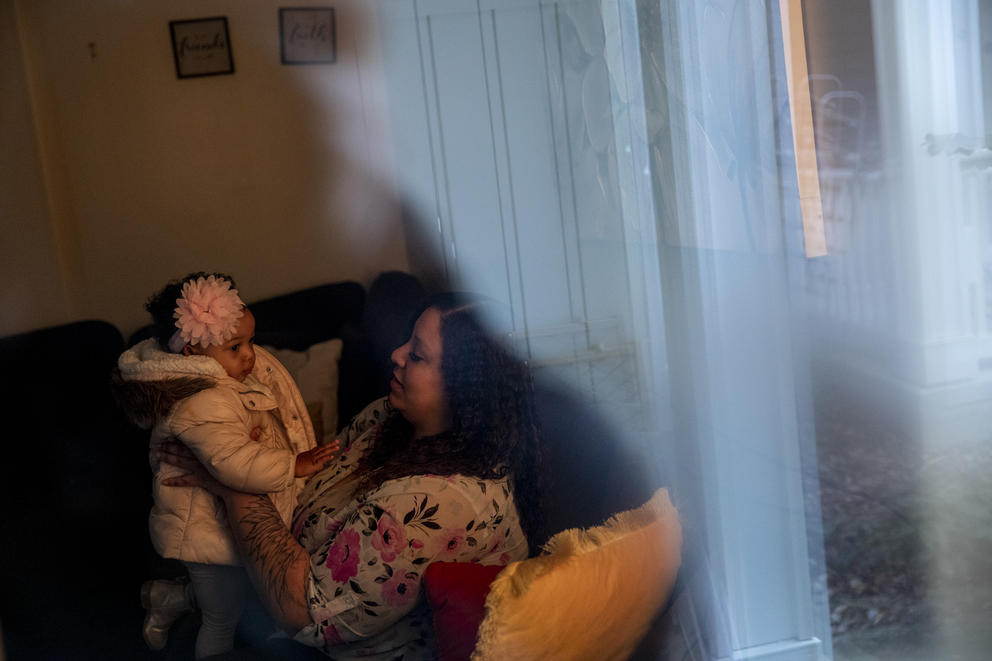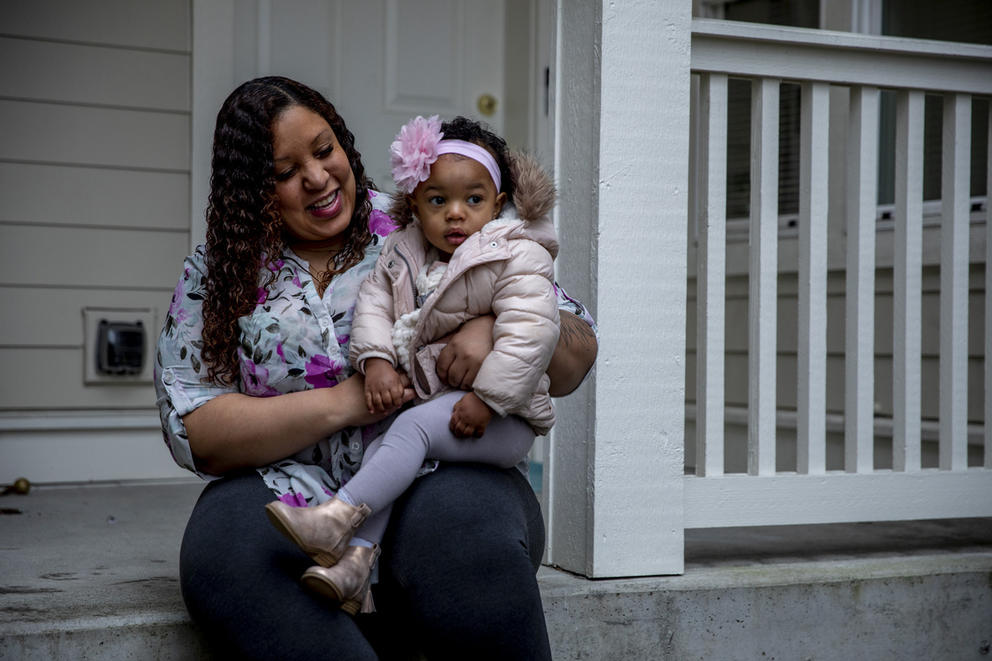Climate-centered bills would phase out gas heat and appliances in most Washington homes and buildings, require that cities consider climate costs in their plans, and increase housing density in some areas by 50%. At the same time, the Legislature is considering expansions to renter protections and public housing with a vigor that advocates say they haven’t seen before in Olympia, while looking to correct racial inequities in the housing system.
Reform advocates note that buildings, including housing, contribute one-fifth of Washington's greenhouse gas emissions and that the housing affordability crisis is extending commutes by pushing cash-strapped workers deeper into the suburbs. They also point out that more efficient homes also cost less to heat and cool, savings that lighten the financial load on renters and homeowners.
The home building and real estate lobbies, influential blocs in the statehouse, argue that changes would increase costs to buyers and renters. They claim the new regulations would deepen Washington’s housing deficit, which currently runs about 220,000 homes.
InvestigateWest is a Seattle-based nonprofit newsroom producing journalism for the common good. Learn more and sign up to receive alerts about future stories at http://www.invw.org/newsletters/
Legislation to decarbonize buildings, consider environmental justice in permitting and require that climate impacts be taken into account in new development “take us in the wrong direction,” said Janelle Guthrie, communications director of the Building Industry Association of Washington.
“Now, more than ever, homes matter,” Guthrie said. “Home builders and our associates want anyone who wants to buy a clean, safe home to have the ability to do so.”
‘Sprawl is very expensive’
High housing costs around employment centers like Seattle and Bellevue are bad for the planet, as most commuters, including 60% of those living in King County, according to U.S. Census Bureau estimates, still drive to work alone by car. The number of workers with hour-plus commutes is rising, largely because the close-in homes, when they can be found at all, are exorbitantly expensive.
Unable to make rent in Seattle, Shavon Jones found herself living in the Cascade foothills near Maple Valley. She shoehorned herself and five of her children into a two-bedroom apartment, and spent more than two hours each day driving to and from work in Seattle.
“I just kept telling myself, there’s got to be a better way,” said Jones, now a 37-year-old community service worker with the anti-poverty organization Solid Ground.
Less than a year ago, though, Jones managed to do the improbable — buy a home in Seattle on a five-figure income.
She moved into a five-bedroom home built by Habitat for Humanity on land owned by Homestead Community Land Trust, a nonprofit helping would-be homeowners making slightly less than the area median income to buy at below-market rates. Her old one-hour drive to work is now a 20-minute light rail trip, and she’s doing something most Black and Latino Americans don't — build wealth.
“This is what life is about,” said Jones, whose heritage is Black, Latino and white. “You want to be able to have something. This is the start of wealth for people.”
Washingtonians earning less than 80% of median income — that’s about $82,000 a year in Seattle, where the average household income passed $100,000 in 2020 — lack safe, affordable housing, according to the Governor’s Office. The average home price was $397,000 statewide in 2019; the average monthly rent for a one-bedroom apartment was $1,300 statewide and $300 a month higher in King County with its 0% vacancy rate.
In Washington’s not-so-distant past, excessive heat in the housing market has been cooled by urban sprawl. But, state Rep. Davina Duerr noted, “sprawl is very expensive.”
Sprawl comes at an immediate cost to city and county governments tasked with keeping up the roads and sewers that serve ballooning communities, said Duerr, a Democrat from Bothell. And it carries environmental debts to be paid by future generations.
Building booms of in the 1980s and 1990s saw swaths of forestland converted to subdivisions, adding drivers to wandering roads built for cars alone. Now, cities like Bothell, where Duerr also serves on the city council, must correct planning decisions made decades ago, decisions Duerr views as shortsighted. Bicycle paths and dense housing have to be laid atop cities that weren’t built for them, so that Washington can grow its population while shrinking its carbon footprint.
Legislation introduced by Duerr would write climate change prevention into the state’s principal urban development law, the Growth Management Act.
House Bill 1099, currently before the House Appropriations Committee, would require cities in the state’s most populated counties to grow in such a way that greenhouse gas emissions fall while directing the state government to produce a set of model rules for cities to adopt. If greenhouse gas emissions don’t fall — they haven’t in Washington — more stringent guidelines would be created.
“This is truly an existential threat,” Duerr said. “Mother Nature doesn’t give you points for participation or an A for effort. We really have to tackle this sooner, not later.”
Duerr’s bill has drawn opposition from interest groups lobbying on behalf of local governments and the housing industry. Guthrie, the Building Industry Association of Washington spokeswoman, said the legislation “makes it even harder to find buildable lands for single-family homes across our state.”
“People need more choices when it comes to where they can live, not less,” she said by email.
The bill is one of several that would push cities to become more densely populated. Another would require that in-city zoning allow for at least six homes per acre, an increase from the four per acre currently required. It would prompt most cities to allow higher-density housing types, like duplexes and townhomes in areas zoned for single-family homes, and create a tax incentive for cities that increase housing density near transit hubs.
A co-sponsor to the bipartisan bill, HB 1157, state Rep. Greg Gilday, R-Camano Island, said he believes legislation could spur badly needed construction.
A real estate agent by trade, Gilday described the state’s housing shortage as acute. On Camano, an island that is home to about 17,000 people, there were just 13 homes on the market in early February, Gilday said, less than a tenth of the precrunch norm.
“In my area of the state, if you can find a house for under $400,000, you’re lucky,” Gilday said. “If people can’t even afford that first rung on the ladder, that’s not good for our society.”
No clear path on fossil fuels
While more housing may be a social good, many of the homes and commercial spaces already built are causing environmental damage.
About 20% of the greenhouse gases emitted in Washington comes from buildings, most often from burning natural gas, according to a recent report from the state Department of Commerce. Almost all commercial water heaters are fired by fossil fuels. Nearly half of Washington homes are heated with gas, oil or propane.
Legislation currently in play in Olympia would force a transition away from fossil fuels in buildings. While the scope of the legislation is currently in flux, Alex Ramel, D-Bellingham, said it would prohibit fossil fuels in any new homes and commercial buildings by 2031 and begin transitioning existing buildings to electricity immediately.
“The bill sets us on a path to meet our climate goals in the building sector, said Ramel, prime sponsor of HB1184.
The legislation leaves space for limited use of renewable natural gas and “green” hydrogen. But the transition will primarily be to electric heat, Ramel said. The technologies to capture waste gas and generate hydrogen don’t yet produce nearly enough fuel to replace the fossil fuels currently used in Washington buildings. Research indicates all-electric homes save money for most homeowners and renters.
A spokesperson for Puget Sound Energy, Washington’s largest natural gas supplier, with 900,000 customers in the state, described the company as “fuel neutral,” but emphasized the role natural gas currently plays in Washington’s energy picture. On cold days, according to the utility, natural gas provides about two-thirds of the energy used in Seattle’s buildings. Seattle recently approved a natural gas ban for commercial buildings.
PSE has set more modest goals than those in Ramel’s bill or promoted by the Governor’s Office. The utility hopes to reduce carbon emissions 30% by 2030, and has set the “aspirational goal” of net zero carbon emissions by 2045.
“As we move forward, a priority must be maintaining the integrity of the delivery system and supporting the highly skilled and dedicated employees who serve our customers,” PSE spokesperson Andrew Padula said.
The legislation would also inject $50 million into weatherization programs aimed at low-income housing, programs that could include heating retrofits for homes currently heated with gas or oil, Ramel said.
When it comes to energy efficiency in buildings, potential improvements abound, said Ash Awad, chief market officer at McKinstry, a nationally prominent construction firm specializing in high-performance buildings.
Basic efficiency improvements to lighting, insulation and heating and cooling systems could dramatically reduce the environmental impact of many buildings, said Awad, an engineer at the Seattle-based company. Most pay for themselves in 10 to 15 years; if rules are put in place to count the cost of carbon pollution in that “payback” analysis, Awad said, the return on investment will become all the faster.
Awad said McKinstry engineers usually caution clients against installing new equipment that uses fossil fuels. Electricity is more efficient and cleaner, and more certain.
“If they don’t want to do it now for carbon reasons and efficiency reasons, we remind them of what might happen in the life of that system,” he said. “It’s highly likely that in the next 10 or 15 years, these fossil-fuel heating systems are going to become stranded assets” — obsolete gas-fired equipment, burning fuels that have fallen into disuse.
McKinstry has supported Ramel’s legislation. It’s something of an unusual move for a construction company.
“We’re not huge fans of mandates,” Awad said, “but I would say that in some sectors of the built environment, that’s the only way we’re going to make change happen.”
The Association of Washington Businesses and the Building Industry Association of Washington oppose Ramel’s legislation. The state already requires home builders to comply with energy codes far tougher than those in most states, rules that went into effect Feb. 1. Guthrie said the more stringent code may have added upward of $10,000 to the cost to build a new home.
‘A wave of evictions’
Higher efficiency homes may be more expensive to build, but they’re cheaper to operate, and electrical systems are also cheaper to maintain, said Daniel Aldana Cohen, director of the University of Pennsylvania’s Socio-Spatial Climate Collaborative. Gas prices will rise only as the customer base shrinks and systemwide costs are shared by a smaller number of customers.
The whole industry will inevitably move to electrification, so any increased cost would be temporary, the assistant professor continued.
“Stranding new home residents with obsolete-on-delivery fossil systems is cruel and reckless,” said Cohen, co-author of A Planet to Win: Why We Need a Green New Deal. “By far the most affordable option for consumers is aligning the state's regulation with the future of the construction industry.”
In any case, for-profit developers aren’t building very many homes for lower- and middle-income buyers, said Kathleen Hosfeld, executive director of Homestead Community Land Trust, the Seattle organization that helped Shavon Jones buy her home.
"They will lose $100,000 on every home they build,” Hosfeld said. “The labor, the materials, all of that, cost more than our people are going to be able to pay.”
Cohen said the market will not solve the housing crisis — he advocates renter protections, as well as cooperatives that tie the sale prices of homes to earnings of workers, as Homestead Land Trust does. The market will not enable communities to absorb climate change-driven migration, either.
“Tens of millions of Americans are projected to move out of climate danger this century, and the U.S. will hopefully let in climate migrants from around the world,” he said by email. “Only new, green, affordable housing … could make all these moves a reasonable improvement for people's living conditions.”
Washington’s next rush of displaced people may be homegrown. Since the coronavirus pandemic set in, more than 200,000 households have fallen behind in their rents, said Rachael Myers, executive director of the Washington Low Income Housing Alliance. A moratorium on evictions has kept most in place, but those protections are fleeting.
“If the eviction moratorium ends and we don’t create some kind of off-ramp, we’re going to see a wave of evictions,” Myers said.
Gov. Jay Inslee has asked the Legislature to approve hundreds of millions in new funding for renter assistance, including $220 million to build nearly 4,000 new affordable homes. Inslee has called for the state to put $328 million toward paying off back rents, funding that would help 28,000 households each month through this June and taper to about 1,000 households a month by June 2022.
Myers supports those investments but said they’re far too small to protect more than a fraction of Washington’s at-risk renters.
“It’s not like people are going to have just a little bit to catch up on,” she said. “A lot of families are going to be multiple months behind.”
Nationally, more than 10 million households are behind on their rent, according to a recent report by Moody’s Analytics, which estimated the total U.S. rent debt at $57 billion. The average distressed renter owes nearly four months in back payments.
Inslee has also asked for $17 million to fund a foreclosure relief program meant to assist homeowners who’ve fallen behind on their mortgages during the pandemic. Federal action provided mortgage holders the ability to pause payments for up to six months; most may be able to simply extend their loans to make up for the missed payments years from now.
But for Washingtonians struggling to become homeowners, there’s little help coming from Olympia.
Susan Zeman had been working and renting in Seattle for more than a decade before she and her husband were able to buy a home. Even then, they were able to live near her work only because they happened upon a Homestead Community Land Trust advertisement while walking in Seattle’s Columbia City neighborhood.
Zeman’s family won’t, as she puts it, “win the lottery” when they sell the townhouse they bought for $204,000 in 2016. The trust, which owns the land on which the townhouse sits, restrains the resale price so that another middle-income buyer can afford it.
But, after years of uncertainty, the stability is priceless.
“What we have here is working-class housing that I own, that no one can kick me out of,” Zeman said.
Zeman, a registered nurse with Swedish Health Services, said her 20-minute commute makes her an outlier among her colleagues. Though all are well-trained professionals in an in-demand field, nearly all of the other nurses and medical staff spend an hour or more a day driving in from homes in distant suburbs. Seattle’s house prices — which hit an all-time high in September at $800,000 — make them commuters.
“They’re buying these McMansions out in the suburbs, and they’re driving their cars into work every day,” Zeman said.
“Housing affordability is a climate issue,” Zeman said. “If we’re going to avoid a climate catastrophe, then people who want to be in the city are going to have to be able to live in the city.”
Photo captions have been corrected to say Homestead Community Land Trust. The name of the organization was incorrect in a previous version.



